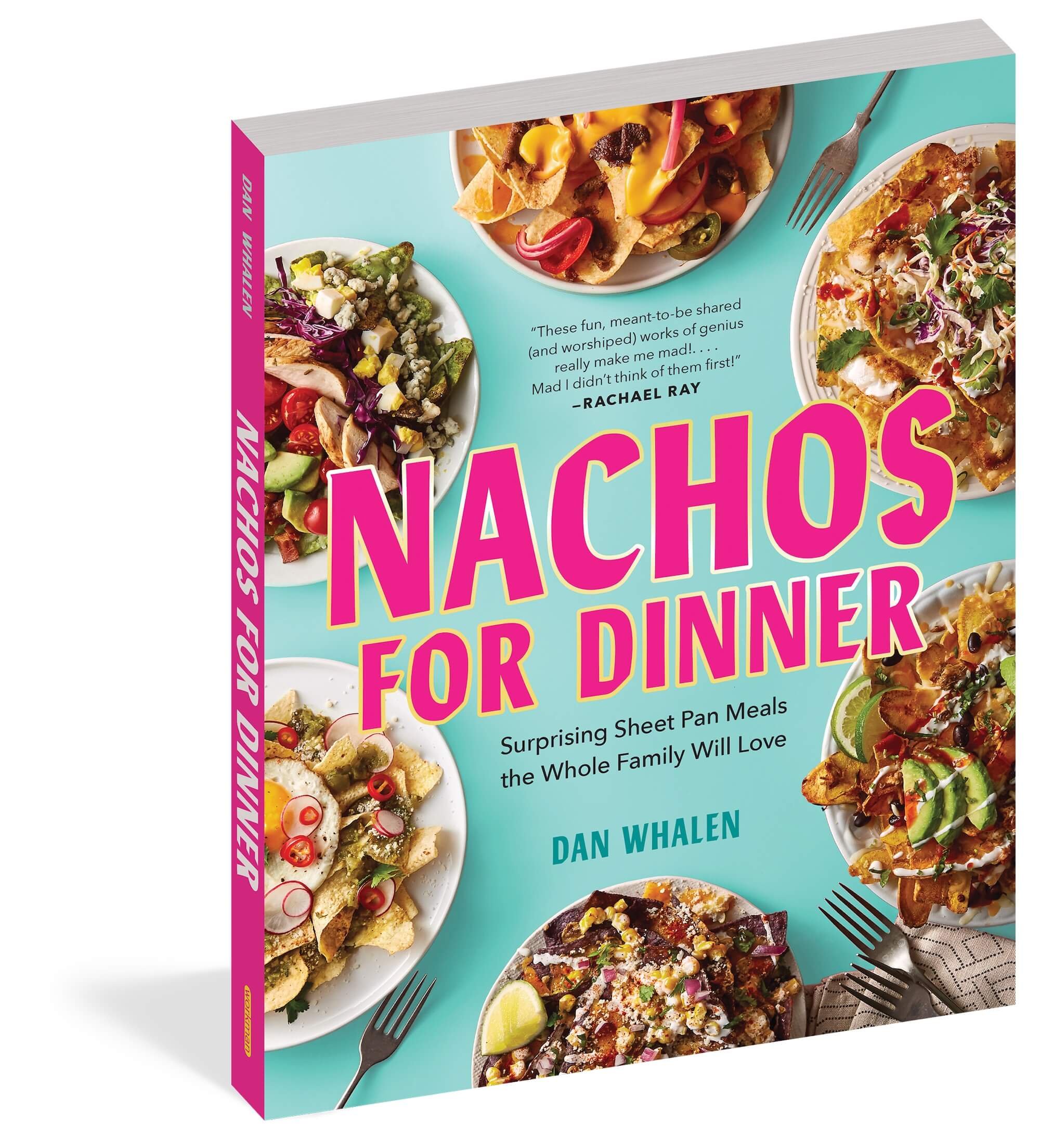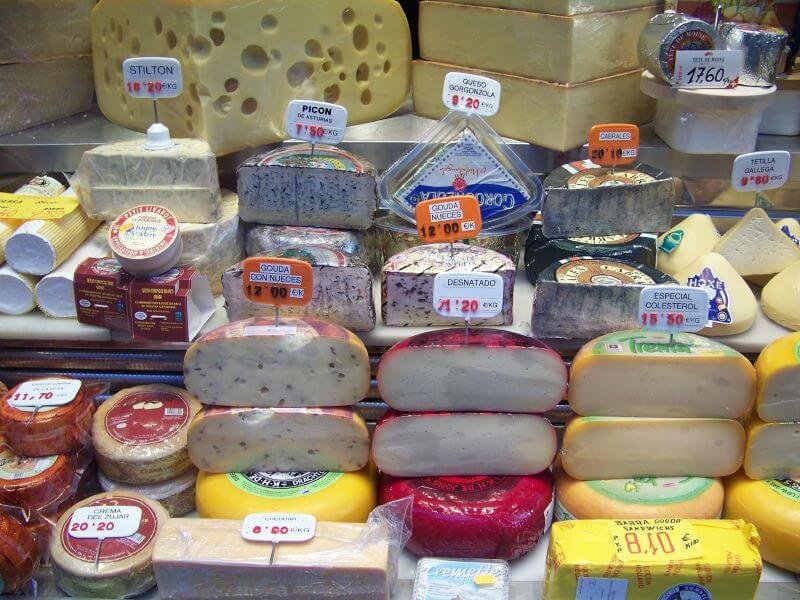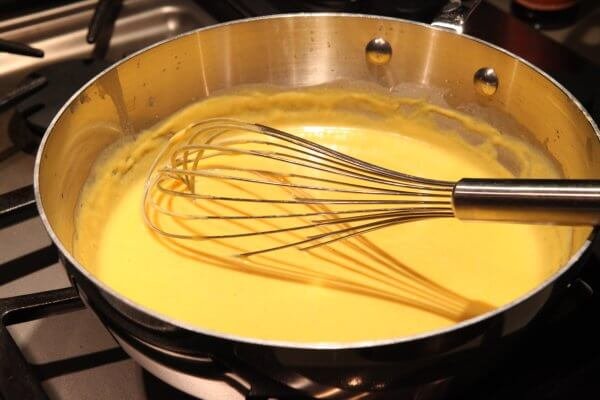5 Cheesy Secrets to Making the Best Nachos Ever
Nachos for Dinner is the latest cookbook from The Food in My Beard blogger Dan Whalen. In his world, anything can get the nacho treatment—not just appetizers but sandwiches, soups, salads and even desserts. So it comes as no surprise that everything you need to know about cheese and nachos is in this book. Here’s what we learned.
Blue cheese
1. Think beyond Cheddar and Monterey jack
While Whalen sometimes uses classic nacho cheeses like Cheddar and Monterey jack, he also uses a wide variety of cheeses that are less traditional. In addition to the aforementioned blue, parmesan and feta, he also uses Swiss, cotija, ricotta, and Gruyere. And why not? Nachos lend themselves to personalization, creativity and out of the box (or bag) thinking.
2. Use Multiple Cheeses
The author goes on to say that he thinks using more than one cheese is usually better in any recipe, including nachos. Different cheeses are like different guests at a party—the each add a different texture and personality. While Cheddar, jack or mozzarella melt well, blue, Pecorino Romano, and Feta will add a punch of flavor.
Grating cheese by hand
3. Don’t Buy Pre-Shredded Cheese
Whalen explains that he likes to grate his own cheese rather than using shredded cheese that you might find in the supermarket because “industrial shredded cheeses are packaged with anti-caking agents which means they won’t yield the kind of gooeyness you might typically associate with nachos.” Of course, we couldn’t agree more. In fact we might add, always use the best quality cheese you can get your hands on.
Sprinkling cheese
4. Double cheesing
Early in the book he shares his “double-cheesing” technique. Says Whalen, “Sprinkle half of the cheese first, then the toppings, then the remaining cheese.” Double cheesing has two benefits: it helps the toppings adhere to the chips and keeps the toppings from making the ships soggy. Brilliant!
"cheese sauce, the cheesiest" by thepinkpeppercorn is licensed under CC BY 2.0
5. Get Saucy, but Skip the Processed Cheese
In general, Whalen shies away from using processed cheese with the rare exception such as the use of American cheese in his cheeseburger nachos. He provides a recipe for nacho cheese sauce, but it uses evaporated milk and cornstarch to provide emulsification. Another possibility we explored: use sodium citrate.
A recipe in the book that demonstrates almost all the tips is Caprese Nachos, based on the famous Caprese salad with mozzarella, tomatoes and basil.
Caprese Nachos photo credit Penny De Los Santos
Caprese Nachos Recipe
It’s hard to beat the taste of lightly salted heirloom tomatoes in August with a touch of fresh mozzarella and basil—but topping tortilla chips with this mixture is pretty darn good, too.
Some might think it’s a travesty to cook perfectly ripe heirlooms, but we are really just warming them up—and the little bit of heat concentrates that beautiful summertime flavor. (As an added bonus, you can make this at other times of year—the slight cooking gives off-season tomatoes a flavor boost.)
Makes 4 servings for dinner, or 8 as an appetizer
Takes about 15 minutes
Ingredients
1 bag (12 ounces) tortilla chips (about 90 chips)
1½ cups (6 ounces) shredded low-moisture mozzarella cheese
2 cups roughly chopped ripe heirloom tomatoes (3 to 5 tomatoes)
½ cup grated Pecorino Romano cheese
About 30 basil leaves, cut into slivers, plus a few whole leaves for garnish
¼ cup balsamic glaze (see Note)
Instructions
1. Preheat the broiler to low with a rack about 4 inches from the heat.
2. Arrange the tortilla chips evenly on a sheet pan, overlapping them as little as possible.
3. Sprinkle the mozzarella cheese over the top, then the tomatoes, and finally the Pecorino Romano cheese.
4. Broil until the cheeses have melted and the chips are starting to brown, 3 to 5 minutes. (Watch carefully to
make sure they don’t burn.) Remove from the oven.
5. Top the nachos with the basil. Drizzle on the balsamic glaze and serve hot.
Note: Balsamic glaze is available at most supermarkets (it’s also sold as balsamic syrup or reduction). If you can’t find it, it’s simple enough to make your own: Heat 1 cup of balsamic vinegar (plus 1 tablespoon of brown sugar if you want it sweeter) in a saucepan over medium-low heat until it comes to a very low simmer. Cook until it has thickened enough to coat the back of a spoon and reduced to ¼ cup, about 1 hour.
Excerpted from Nachos for Dinner: Surprising Sheet Pan Meals the Whole Family Will Love! by Dan Whalen (Workman Publishing). Copyright © 2021. Photographs by Penny De Los Santos.







